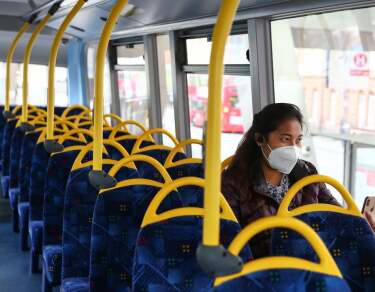The future of travel in the UK?

On 9th May Transport Secretary, Grant Shapps announced £2 billion of funding to improve walking and cycling infrastructure; however, only £2.5 million of that is available ‘immediately’ as art of an emergency active travel fund. No further details have been provided in respect of the timing for the remaining funds or how that sum relates to pre-existing transport funding; except that it forms part of the £5 billion in funding for cycling and buses that was previously announced in February.
There is no doubt that as we all adjust to the ‘new normal’, many people have been forced to re-evaluate their working arrangements and travel habits. This enforced step-change in behaviour is very likely to result in an increased proportion of employees working from home, full or part-time in the future. A recent YouGov analysis suggests that 40% of workers believe they could do their job from home. That alone could result in a material reduction in peak hour commuting. It is also likely that many people will have discovered the benefits of walking and cycling for a variety of journey types and will continue that behaviour to some degree after the lockdown is lifted.
However, the big question is what becomes of mass-transit public transport? The Government message for many years has been to reduce the need to travel, especially by car. The transport planning industry has been centred around a simple principle, to reduce single-occupancy car journeys in favour of sustainable modes of transport, including buses, trains and trams. Public transport providers now face an almost impossible challenge to ensure social distancing for their passengers and staff, without affecting capacity and therefore viability. Ironically, under-utilised rural services may be the simplest to maintain as the previous low occupancy rates may be the model for all public transport for the foreseeable future. Unfortunately, those services were previously subsidised by the high-occupancy viable city centre services that will be worst hit by any changes in regulations or the public’s travel choices.
There is no doubt this is a fast-changing situation and attitudes to travel can be expected to alter just as rapidly.
Transport Focus’s recent survey set out significant changes in attitude which could see reduced use of public transport and increased traffic on our roads from cars, motorcyclists, cyclists and pedestrians. For instance;
- 62% said they wouldn’t be using public transport unless social distancing is in place
- 60% said they would drive more rather than use public transport
- 51% said they would cycle and walk more rather than use public transport.
These surveys are being repeated weekly so it will be interesting to see how attitudes change over the coming weeks.